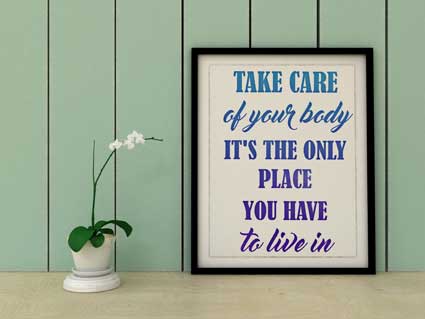Organizations and Agencies
There are hundreds of organizations and agencies dedicated to combating substance abuse on multiple levels across the country. Many of these are based on government programs and serve as the leading authorities on addiction and its aspects. They provide resources and information that can be used by anyone seeking to educate themselves about substance abuse.
-
NIDA or the National Institute on Drug Abuse--NIDA is one of the leading research forces behind the science of addiction. Technically a branch of the National Institute of Health (NIH), they seek to increase the public's knowledge about substance abuse and its impacts. They try to look at the causes of addiction and apply that information towards prevention, diagnostic, and treatment measures. Information about substance abuse they provide is not limited to any specific drug or substance. Operating since the 1930s, NIDA's efforts have greatly assisted the scientific community in learning more about substance abuse. They can be found at www.drugabuse.gov. A teen-friendly version of their website, with corresponding resources, can be found at teens.drugabuse.gov.
-
NIAAA or the National Institute on Alcohol Abuse and Alcoholism--Another branch of the NIH, NIAAA focuses on alcohol use and its effects. Like NIDA, they lead the way in research and education about alcohol abuse and alcoholism. They provide much of the funding used by researchers of alcohol addiction in- and outside of the organization. NIAAA can be found all over the world through their collaboration with other institutes, agencies, organizations, and programs. Many of their goals focus on fighting alcoholism stigmas, developing treatment and prevention programming, understanding causes of alcoholism, and educating people on the risks of abuse. You can learn more about NIAAA, its resources and work at www.niaaa.nih.gov.
-
SAMHSA or the Substance Abuse and Mental Health Services Administration--The connections that substance abuse has with mental health often requires special attention in prevention and treatment efforts. The folks at SAMHSA operate as part of the United States Department of Health and Human Services in the effort to educate and serve the public on matters concern substance abuse and mental health. First founded by Congress in 1992, SAMHSA runs many of the advisory councils focusing on substance abuse and mental health. This has allowed them to effectively gather information and put together an effective plan of action. Many of the laws and policies surrounding both mental health and substance abuse began as SAMHSA Initiatives. Their website, www.samhsa.gov, has a plethora of information despite the organization's relatively short existence. Not only are there publications on studies revolving around substance abuse and mental health, but there are a ton of programs. Their database is searchable, making it easier to find specific resources like treatment centers near you. They also operate many national helplines for different health conditions and disorders, which may be a viable resource. SAMHSA's resources can be accessed through their (free) official apps for your convenience.
-
Alcoholics Anonymous and 12-Step Programs--Probably one of the largest and most well-known support networks for substance abuse, A.A. has a lot of standards for recovery practices. They are a fellowship with no limitations or restrictions on membership, just the requirement of wanting support as you deal with your alcohol use. Much of what A.A. has to offer is in the form of literature for those following a version of their 12-Step Program. A.A.'s format of the 12-Step Program has been repurposed for multiple different addiction issues, including Narcotics Anonymous, Gamblers Anonymous, and more. Many additional organizations following this set-up have been developed for other health issues. A.A.'s long-running success--it was first founded in the 1930s--has made it one of the most popular options for those seeking help for substance abuse. It should be noted that A.A.'s operating principles are based on spiritual beliefs and the idea that a person can beat addiction through sheer force of will.
-
NCADD or the National Council on Alcoholism and Drug Dependence--NCADD is an organization that offers resources to those who are seeking treatment and recovery from addiction. Its beginnings have ties to A.A. so there may be some overlap between the two organizations. Their focus is on implementing programs to help people currently struggling with addiction. Most of NCADD's information is split between education on addiction issues and care options. They also offer resources on training on substance abuse for professional and workplace settings, which employers can use to set their own workplace policies for substance abuse. A lot of their resource offerings work well when applied to families and communities struggling with substance abuse, not just the individual with the addiction. It should be noted that NCADD is not officially affiliated with any government agency outside of discussion topics, but operates as a non-profit organization. Many of their services in their network are operated through volunteer work. To learn more, visit NCADD at www.ncadd.org
-
Society for Human Resource Management or SHRM--More of a resource for businesses than it is for those facing substance abuse, SHRM is an organization that offers insight and education on current workplace trends. For substance abuse in the workplace, they have information on policies, practices, training, and education that employers can implement in their own companies. SHRM is a membership-based community and some of their resources have access limited to current members. You can learn more about SHRM at www.shrm.org.
-
Institute for a Drug-Free Workplace--This is an national non-profit offering resources specific to substance abuse in the workplace. They work to protect employer and employee rights while participating in prevention and treatment programs. Drug-Free is a strong advocate for employee education on substance abuse, including detection, prevention, and treatment. There are resources specific to the employer, the employee, or both available through their website at www.drugfreeworkplace.org. All of the organizations resources and programs can be used in workplaces across industries, and can be adapted to the needs of the business. It does offer membership for business and organizations, rather than individuals.
You may also want to look into local groups as a resource. These organizations can help provide information about substance abuse in your area, which can be used to deal with specific issues. They can be more of an immediate help than a national group in some cases, especially in instances where quick access is needed.
Responding to Substance Abuse Emergencies
Sadly, there are a lot of things that can go wrong when it comes to substance abuse and the workplace. Events like accidents and overdoses are commonplace, and can be difficult to handle if you are underprepared. In the workplace, the response to an accident is well covered during training of personnel. Follow established protocols and do not allow the person who caused the accident to leave or try to destroy evidence of their substance abuse.
An overdose has a high potential for fatality for people with substance abuse issues. In the current drug epidemic, overdose fatalities are skyrocketing. According to the American Society of Addiction Medicine, there were 52,404 fatal drug overdoses in 2015, making it the number one cause of accidental death in the United States.
When faced with a drug overdose, most people have no idea what to do. Professionals in law enforcement and medicine receive instruction on treating an overdose as part of their training, but their efforts only work if they get to the victim in time. This how most cases of overdose turn fatal, either because the victim was alone at the time and unable to get help or because those around them failed to act. Time is very much of the essence and the actions of others can shape the outcome.
A person exhibiting signs of an overdose may become unconscious, limp, and unresponsive to stimuli. Their lips and fingers may turn blue, and they may be unable to speak even if they try. Seizures, vomiting, dizziness, confusion, and breathing difficulties may occur. Existing symptoms of drug use may amplify during an overdose as well. As soon as any of these symptoms present themselves and you suspect the person may be overdosing, take action immediately.
The first thing that should be done in for any medical emergency is to call 911. Do your best to remain calm and tell the operator what is happening. It's okay if you are unsure of what drug(s) the person took; based on their symptoms, the operator may be able to identify the substance. Follow any instructions the operator tells you to the best of your ability. Whatever you do, do not leave the person alone unless you absolutely have to. Get them in the recovery position by laying them on their side and support their head as soon as possible to keep their airway clear.
If the person isn't breathing, then administer CPR. Clear their mouth of anything that may block their airway, like food, gum, vomit, or the drug itself before continuing. Lay them on their back and carefully place your hand under their chin as you tilt their head back. Cover their mouth with yours, pinch their nose, and breathe twice into their mouths. Do so slowly and make sure that you're pushing in enough air to cause their lungs to expand; if their chest does not rise, try again. When you take a breath, turn your head to the side to see if their chest moves; if not, tilt their head back more. Breathe, wait five seconds, and then breathe again. Continue until arrives or the person begins breathing by themselves.
A warning: DO NOT FORCE THE PERSON TO VOMIT. They can still choke if their away is beginning to close up or is otherwise already blocked. Do NOT try to give them food or a beverage to combat their symptoms or make them feel better while you wait for help to arrive. Again, they can choke. Simply monitor their condition and make sure they continue breathing until help arrives.
There are additional options for responding to an overdose that may be available. In the event a person overdoses on an opioid substance, there is a drug that can be administered to reverse the effects: naloxone. When administered, naloxone acts quickly and can halt any further effects from the opiates currently in the person's system. Currently, naloxone is available in two formats. The first, an auto-injectable available under the brand name EVZIO, works similar to an EpiPen. The device, which administers verbal instructions on its use, is placed against the affected person's thigh where it is injected. The second is a nasal spray called NARCAN; it is an assembly-free version of a similar product available only to law enforcement and medical personnel. Both EVZIO and NARCAN come with 2 dosages per package, as some instances may require a repeat dose.
-
Legally, naloxone does have some restrictions. Some states do not allow naloxone access or sale without a prescription, limiting its use to emergency personnel. An injectable version of naloxone is available, but not to the public; it must be assembled in order to be used, which requires training. NARCAN's increasing availability is largely being viewed as a result of emergency modifications of the injectable version into a nasal spray in the field. There are still some states that prevent over-the-counter access to NARCAN, but the growing opioid epidemic is causing state legislatures to loosen the restrictions to save lives.































